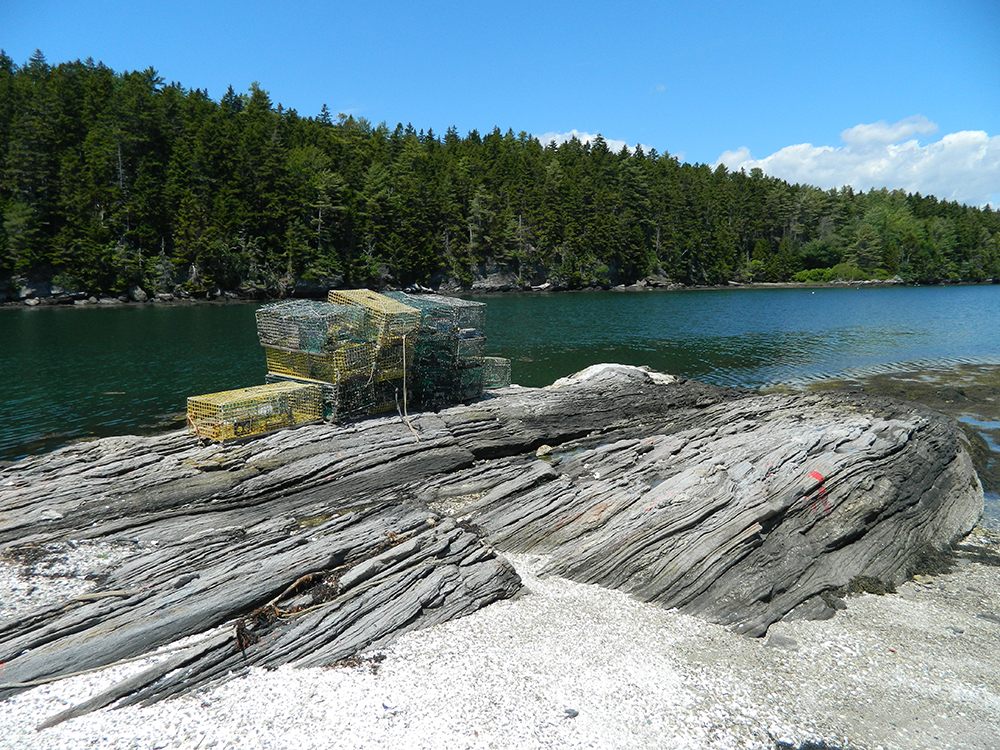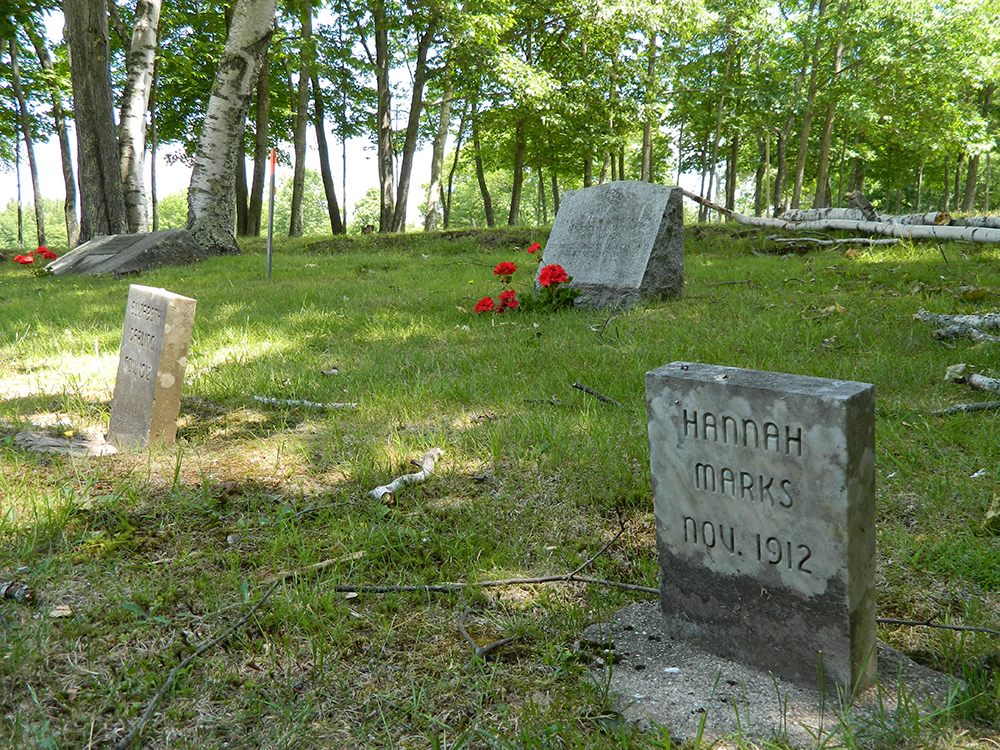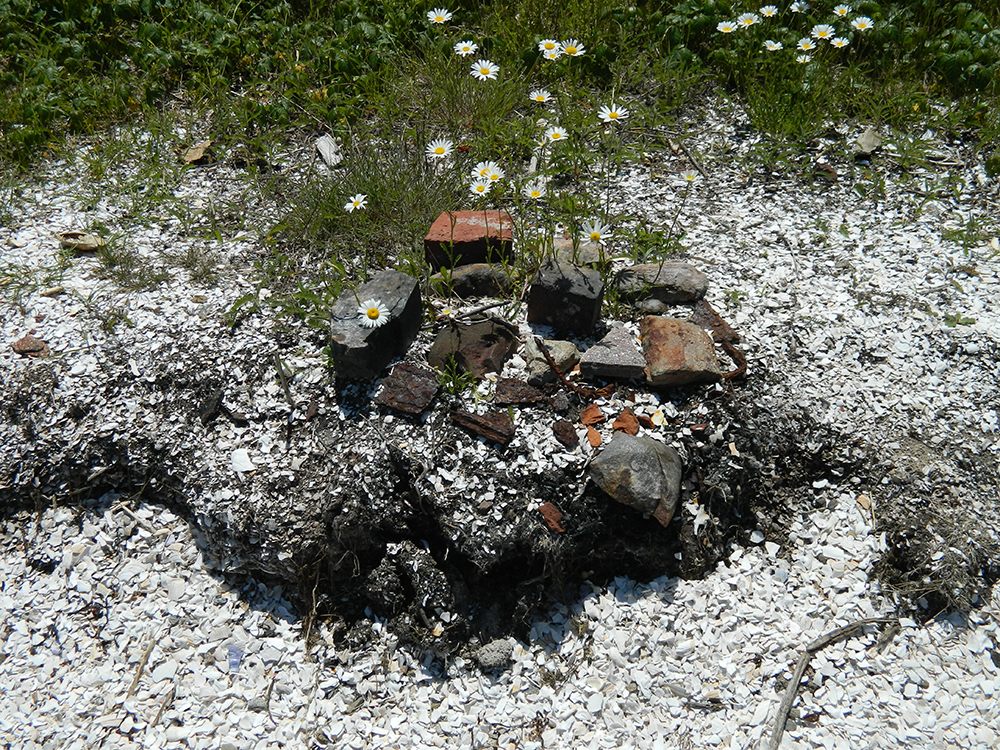The Dark Secrets of This Now-Empty Island in Maine
Malaga Island was home to a fishing community. But in 1911, pseudoscience and greedy politicians changed all that.
The cold green waters of the Gulf of Maine lap against the shore of Malaga Island. Lobster traps are stacked on the beach, spruce trees tower high, set against the azure sky. There is a significant absence of life on this small, 40-acre island, save for vegetation and chattering red squirrels, which belies the fact that a small fishing community once resided here.
One can find serenity on Malaga, a striking contrast against its grim past. Unpopulated and overgrown by brush, this island hides a dark truth of Maine’s history, a tragic chain of events spurred by the racist “science” of eugenics married with political corruption.
Malaga Island is located at the mouth of the New Meadows River and now owned by the Maine Coast Heritage Trust. In a state where there are over 4,600 islands off its coast, it is easy to pass by without second glance. It was named for the Abenaki word for cedar and was inhabited in the mid-19th century. Sources disagree about who settled the island first, with Henry Griffin or Benjamin Darling cited as the founder of this community; neither of them ever owned the island. Eventually, a small community of squatters developed, making a living on fish and lobster. During the late 19th and early 20th centuries, it was common to have squatter island groups off the coast of Maine, surviving on what little they could eke from the sea. At the height of Malaga’s population, 42 individuals lived here, and it was set up like any other fishing village along coastal Maine.

But Malaga was different. As a community of mixed races, it drew the attention of those opposed to miscegenation, and Mainers with a bigoted view.

The shell beach on Malaga Island, and lobster traps kept on the island. (Photo: David Jester)
Those who took up residence on Malaga Island were poor, and their life was hardscrabble but, according to researchers, it wasn’t much different than the mainland. Tar paper shacks were erected on the island, same as any other part of Maine. The residents were of varied lineages such as blacks, Scottish, Irish, Yankees, and Portugese, and although many couples were not legally married, they lived in as families. This struck moral indignation in the people of Maine.
Resting at the far eastern edge of Casco Bay, Malaga was ripe for development. This was a time where Maine was becoming the “vacationland” that we know today. During Victorian times, hotels and resorts along the Maine coast became the premiere location for the rich to escape the summer heat. As the islands of Casco Bay were bought by entrepreneurs, Malaga remained a community untouched, one filled with “degenerates”, as many newspapers during early 20th century described the residents. One headline of The Bath Enterprise in 1902, described the living conditions on Malaga Island, and the residents as “Not Fit For Dogs-Poverty, Immorality and Disease…Ignorance, Shiftlessness, Filth, and Heathenism…A Shameful Disgrace that Should Be Looked After at Once.”
The talk of Malaga, though, went beyond casual bigotry. The residents of Maine accused the islanders of incest, feeble mindedness, and passing on inferior genetics. This did not sit well with the idyllic visions that Maine wished to offer to tourists, and the moral turpitude mainlanders accused them of, only fanned the flames of outlandish and moralistic newspaper accounts. As eugenics grew more popular in Maine, residents of Malaga found themselves under the watchful eye of the state itself.
The pseudoscience that split the world into good and bad genes was widely popular across the U.S. during the first few decades of the 20th century, and taught at the University of Maine campus between 1913 to 1930. One of the most repellent consequences of eugenics was the practice of forced sterilizations. The practice could be found all over the U.S. but historians have unearthed 326 cases of sterilization in Maine specifically between 1925 and 1963. The Assistant Attorney General of Maine, Clyde R. Chapman, in 1936, admitted that many cases of sterilization were unrecorded. To this end, Malaga Island residents were targeted with special zeal.
“Eugenics really took hold in both education reform and reform of social service practices in the state by the 1910s,” says Kate McMahon, a doctoral candidate at Howard University who has been researching Malaga Island, “Those who were poor were also institutionalized and many were forcibly sterilized.” With the growth of this social movement, an increase in sentiment of racism within the state, along with a fear that the black faces of Malaga would interfere with tourist’s vision of the picturesque Maine ideal, it was only a matter of time before the residents of Malaga Island became the center of these social policies and prejudicial fears.
Ownership of Malaga had always been a contentious topic. The island had been bought by Eli Perry in 1818 for $150, but taxes were never paid on the land. After a lengthy protracted battle of island ownership between Phippsburg and Harpswell at the turn of the 20th century, both Malaga Island and its residents were eventually ceded as wards of the state. Directly under the jurisdiction of the Governor’s Executive Council in 1905, this paved way for the eventual demise of this island community.

John and Rosella Eason, with unidentified children, in front of their home on Malaga Island, July 1911. (Photo: Courtesy Maine State Museum)
In the summer of 1911, Governor Frederick Plaisted disembarked upon Malaga Island for the first time, and greeted the residents of the island. The Governor promised the residents that they could not be evicted.
Three weeks later the state gave notice of eviction to the residents of the island with a stern ultimatum.
It was put simply to the residents—leave and remove your homes, or forcibly be removed and your homes will be burned. On July 1, 1912, representatives of the state arrived on Malaga Island to find all residents and houses gone. Only the cemetery remained. Residents were meagerly paid for their homes, but without any help for relocation, and the popular racist stigma attached to these families, repatriation was almost impossible.
Many residents floated their homes up and down the river, with no town willing to accept them. Some perished from this ordeal, with one mother who had fallen ill, found floating in her home, her children clinging to her recently deceased body, when her husband returned with a doctor to treat her recent illness.

Malaga Island school, 1911. (Photo: Courtesy Maine State Museum)
Other residents were institutionalized based on biased evaluations to determine one’s mental capacity. Unable to name objects and facts commonplace to those with money and education—such as a telephone or the current sitting president—a number of the destitute residents of Malaga Island were deemed mentally incompetent. Eight were remanded to the Maine School for the Feeble Minded. Many of these residents would never leave this institution.
It wasn’t enough to remove the living people. The state also had to remove any evidence of inhabitation, and to that end, officials destroyed the cemetery from the island. Collecting the 15 bodies, they were then combined into five caskets. Sailing them across the river, they were buried in unmarked plots at the Maine School for the Feeble Minded.

Two of the grave markers identifying the bodies removed from Malaga Island, with a more recent memorial marker in the background. All the graves are dated November 1912, the date the graves were removed from the island. (Photo: David Jester)
Even this move was fraught with disaster. During the displacement, the body of one of the Eason children was lost in the river. Although there is claim that the body was recovered, McMahon points out, we will never know, since all the bodies are in mass grave at the now Pineland Farms.
The removal of residents from Malaga Island was not just socially motivated based on tenets of eugenics, a level of cronyism and corruption existed. Malaga Island was eventually sold to a friend of Governor Plaisted in 1913, with the promise of resort development. For whatever reasons, this never came to fruition, and the island remained empty.
The state did its best to erase the past, but an ugly linguistic reminder kept bubbling up. Communities on the mainland close to the Malaga referred to those from the island as “Malaga-ites,” a way to separate themselves from those families they deemed unsavory. “It is a pejorative term that denotes mixed racial ancestry,” notes McMahon.
Another word, “malago,’” came to fill the empty void of resentment and shame, left behind after the island was stripped bare. “Malago was a way to talk about people of dark skin, or less than average intelligence,” says one resident who wished to remain anonymous, “The same way people of lesser intelligence were called retards at one time.” While this resident noted these terms are not prevalently used anymore, you can still catch them occasionally.
Another anonymous resident in her 60s, from Westport Island Maine, recalled that “when I was a child, I would hear the term Malago. I never knew it referenced specific population or another island in the river. I just knew it was a bad term of color, and we were not allowed to use it.” The term, though, has thankfully slipped from regional usage.

Pieces from lives forgotten on this small island. Visitors are encouraged to leave any bits and artifacts behind. (Photo: David Jester)
Trying to put together the lives of people is never an easy task using archaeological materials. It is like trying to put together a puzzle without the box-top picture to reference. But that is what archaeologists set out to do with excavations on Malaga Island. With little to none written records from the residents of Malaga, save few school scribblings and documents, much of what we know about life on the island was pieced together from the archaeological materials recovered.
Excavations began on Malaga in the early 2000s, and the past of this island was brought into the spotlight. The lives of those who were forcibly removed began to take shape, and a historical record of the fishing community grew. In 2010, the state of Maine passed a resolution expressing regret for the injustices visited upon the residents of Malaga. Governor Baldacci visited the island to spread the message of acknowledgement and atonement. It doesn’t make up for a century of pain and prejudice, but it’s a start.








Follow us on Twitter to get the latest on the world's hidden wonders.
Like us on Facebook to get the latest on the world's hidden wonders.
Follow us on Twitter Like us on Facebook